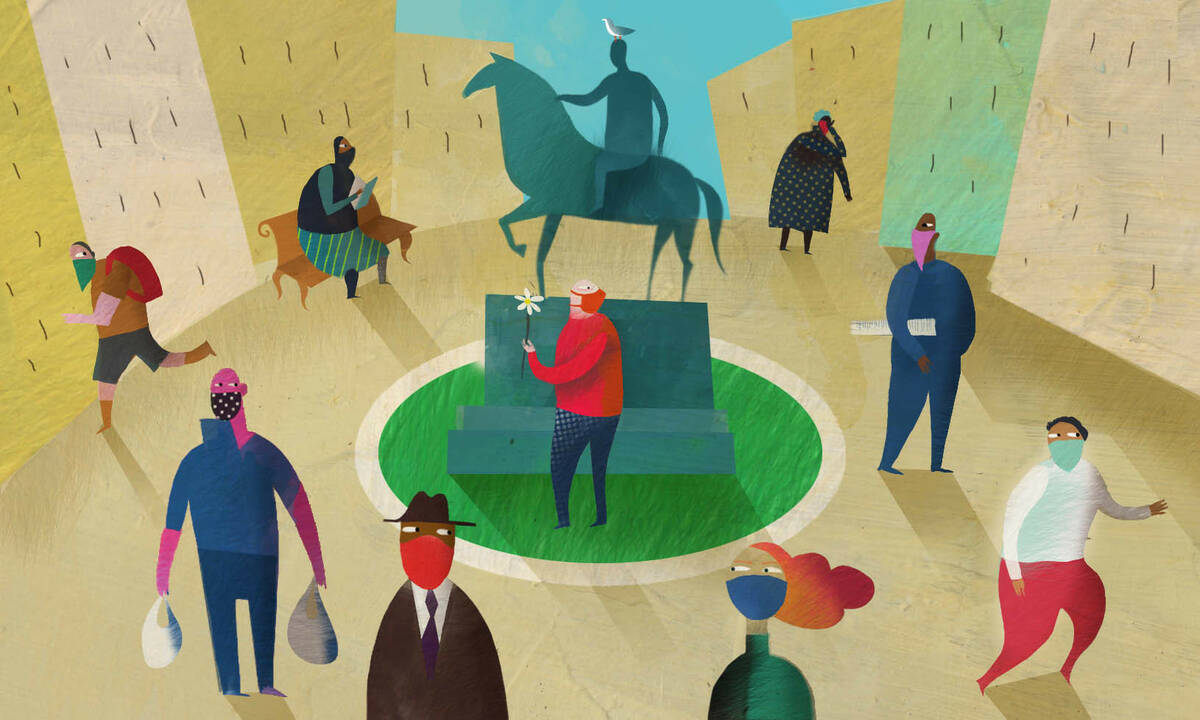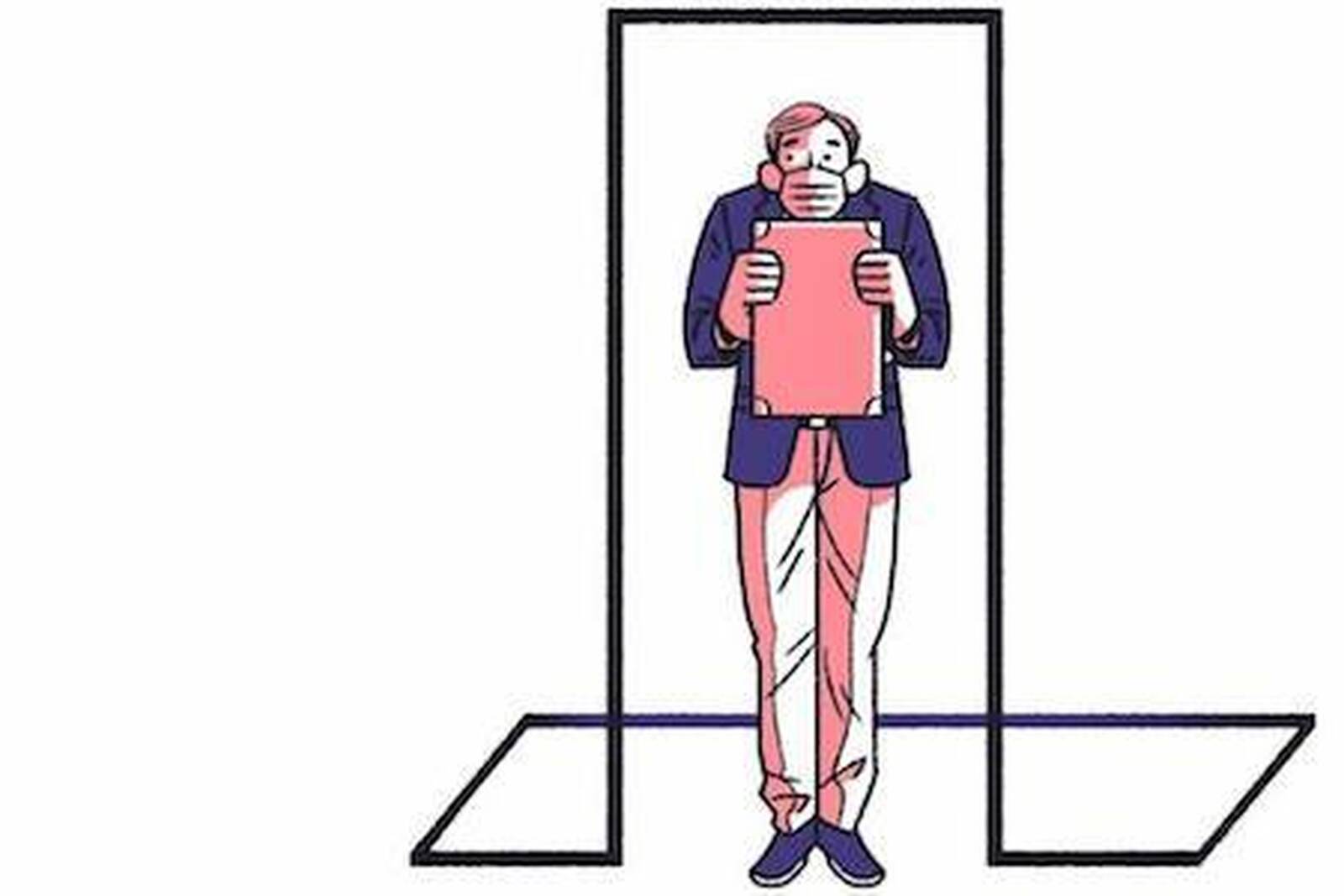What’s become apparent, however, is that adherence to these recommendations varies widely, both across geographies and among individuals. But what factors explain this variation? It’s a question of great significance, because if epidemiologists had more insight into the answer, they’d be better positioned to predict the spread of the disease and to help design more effective preventative policies.
New research suggests that a key factor might be “civic capital”: the level of trust people have for one another and their willingness to engage in activities that benefit the collective more than the individual—like voting, volunteering, or donating blood.
In new research with colleagues, Kellogg finance professors Efraim Benmelech and Paola Sapienza investigated the extent to which social-distancing behavior is predicted by civic capital. They focused on civic capital, Sapienza explains, because “curbing the pandemic in absence of medical tools requires compliance with measures that could be costly for the individual but protect the collectivity.”
They found that the level of a community’s or individual’s civic capital does predict compliance with social-distancing recommendations in both the United States and Europe.
The finding offers one way for policymakers and public-health officials to predict how well different populations might adhere to rules meant to protect public health. This could help them tailor the delivery of their guidance region by region.
“Often when we think about public policy, we tend to assume that one size fits all; we expect everyone to behave in the same way,” Benmelech says. “But there’s more and more evidence accumulating that different populations actually respond to policies very differently.”
Quantifying Civic Capital and Social Distancing
To investigate the relationship between social-distancing compliance and civic capital, Sapienza and Benmelech teamed up with John Barrios and Luigi Zingales, both at the University of Chicago’s Booth School, and Yael Hochberg, at Rice University’s Jones Graduate School of Business.
First, they had to find a way to get a clear look into how populations are—or aren’t—changing their behavior to align with public health officials’ recommendations to socially distance.
The Google COVID-19 Community Mobility Report affords this clear look. It presents aggregated location data from users’ cell phones that can be tracked over time, which allowed the researchers to compare movement to a pre-pandemic baseline. The data contains information at the county level about visits and length of stays at different types of locations, including grocery stores, parks, transit stations, workplaces, and residences.
The researchers were especially interested in locations falling into two categories: retail and recreation (which includes places like restaurants, cafes, shopping centers, museums, and movie theatres) and residential.
The researchers tracked changes in mobility for these spots starting around March 10, assuming that if individuals were complying with social-distancing recommendations, they would spend more time in their residences and less around retail and recreation locations.
Measuring civic capital was not as straightforward.
First, they looked at the rate at which residents of different counties voted in presidential elections between 2004 and 2016, using data from the MIT Election Data and Science Lab. Voting behavior is linked to civic capital, Benmelech explains, because it’s an activity carried out with the collective in mind, rather than the individual. “We understand that if enough of us vote in one way or another, we can make a difference, but it’s also clear to us that none of us is going to be pivotal to the outcome,” he says.
To strengthen confidence in their findings, the researchers also used other county-level measures of civic capital, including census response rates and the number of civic, religious, political, and other associations per one thousand residents.
“There was no single empirical measure of civic capital,” Benmelech says. “Instead, we used a host of those measures in hopes that they all point in the same direction.”
A Global Pattern Predicting Compliance
Indeed, an analysis of these various measures does point in one clear direction: people living in counties high in civic capital are consistently more likely to change their behavior in accordance with officials’ social-distancing recommendations.
Starting around March 10, mobility around retail and recreation locations fell much more sharply in counties with higher measures of civic capital. Accordingly, people in high civic-capital counties were also more likely to increase time spent in residential areas—presumably in their own homes. This pattern held true even when the researchers controlled for a county’s population density, per capita income, share of Trump voters, and number of identified COVID-19 cases and deaths.
The researchers next sought to confirm that this relationship between civic capital and social distancing at the county level would also hold for individuals. After all, though they had controlled for various county characteristics in an effort to isolate the role of civic capital, it was still possible that some other factor was driving the results. For example, perhaps more-restrictive stay-at-home mandates had been issued in counties with higher civic capital.
They commissioned a phone survey of nearly one thousand individuals. Questions included how many people they’d been in close contact with in the past seven days outside of those they lived with, as well as how much, on a scale of one to five, they generally trust other people.
Consistent with the county-level results, more-trusting survey respondents had been in close contact with fewer people, presumably because of a more steadfast commitment to social distancing. An increase in the median level of trust from three to five decreased the probability of interacting with ten or more people by six percentage points.
Finally, the team conducted a similar analysis in Europe. For a measure of civic capital at the regional level, they turned to data from the European Social Value Survey, a biennial survey conducted in 41 European countries. To understand social-distancing behavior, they used the same Google mobility data they’d relied on for the U.S. analysis.
The researchers observed the same effect in Europe as they had with the U.S. study.
“Since we believe that what we have here is an important social phenomenon,” Benmelech says, “there’s no reason it would only be relevant to the U.S.”
Deploying Trusted Messengers
How might COVID-19-prevention policies transform if policymakers began taking into account these findings?
“As part of policymakers’ toolkits, they may need to push differently, or to push more in different places, based on what we know about the characteristics of those places, those populations, those communities,” Benmelech says.
For example, he says, in areas where civic capital is known to be low, it may be a good idea to issue behavioral guidance through familiar, trusted messengers within the community.
“They could be local religious leaders, celebrities, athletes; you’d have to think creatively,” Benmelech says. “If you believe that civic capital is important, you want to think about mechanisms to overcome the lack of it.”




